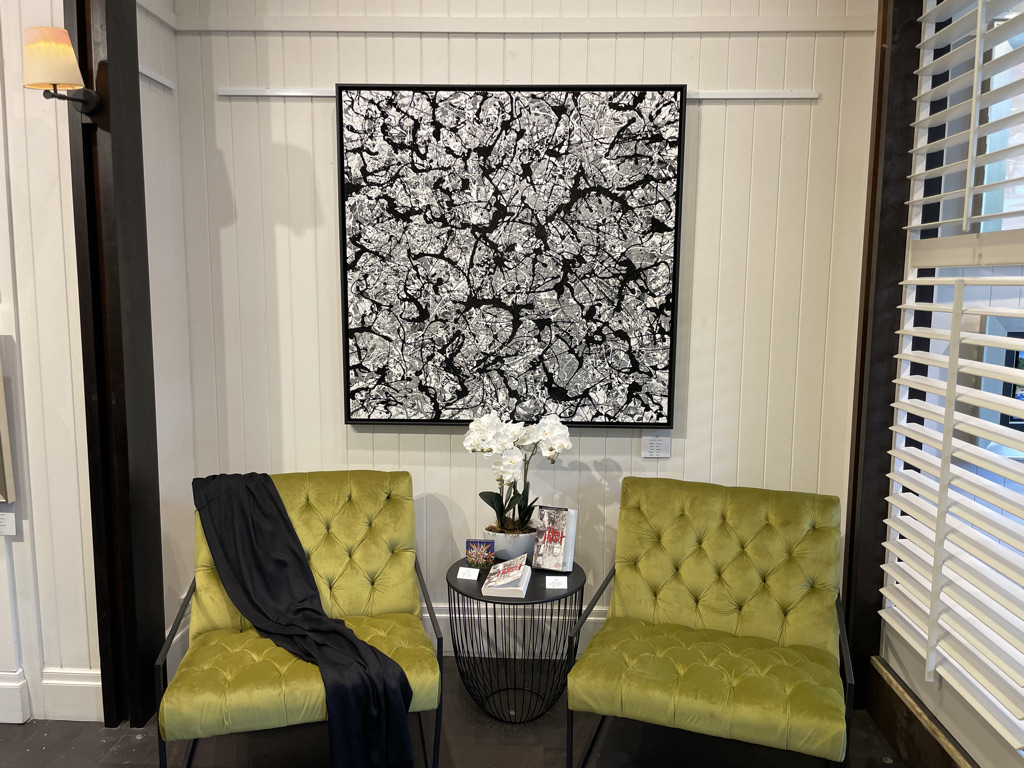The 2023 Federal Budget, announced by Treasurer Dr Jim Chalmers on 9 May, contained the welcome news that the instant asset write-off for small business would be extended for a further year to 30 June 2024, but with a reduced threshold of $20,000 for eligible assets.
As at the time of writing, this particular measure has not been legislated and it does not appear to be included in any of the Bills before Parliament: HERE
For the visual art industry, it will be a nervous wait until the wording of the Bill legislating this measure appears, judging by the potted history of the instant asset write-off as applied to artworks. All that can be said with any certainty is that artworks may still be bought and claimed as a 100% tax deduction, with no cap, for many businesses until 30 June 2023, as long as those artworks are installed in the premises of those businesses.
Background of the Instant Asset Write-off
A small business entity can choose to use the small business capital allowance rule in s.328-D Income Tax Assessment Act 1997 to accelerate depreciation of capital purchases for assets costing less than the prescribed threshold.
The prescribed threshold has varied over the past nine years, but commencing 6 October 2020 it was made uncapped for the majority of businesses in Australia under the temporary full expensing measures. It was meant to revert to $1,000 from 1 July 2023.
– The Government announcement in May amended the prescribed threshold to $20,000 allowing small business entities to immediately deduct the full cost of eligible assets first used or installed ready for use between 1 July 2023 and 30 June 2024:
on a per asset basis
– Assets valued at $20,000 or more will be placed into a depreciation pool and written off at
15% in the first year and 30% for each subsequent year
Note the use of the phrase ‘eligible assets’.
History of the Instant Artwork Write-off
The Small Business and General Business Tax Break announced in 2009 allowed concessional
depreciation on artwork purchases, scaled according to the size of business, as long as the artwork
met the following criteria:
1. tangibility;
2. movability;
3. purchased with the dominant purpose of display in a business premise;
4. new creations;
5. made by professional artists registered with an Australian Business Number (ABN); and
6. not trading stock.
Artworks were first known as ‘listed’ assets under the CGT rules. It could be an investment that produces capital returns or an item of inventory. Additionally, an artwork may be a depreciable tangible asset because it has a limited effective life and it can reasonably be expected to decline in value over time.
The effective life of an asset under the tax depreciation rules is ‘the period it can be used to produce income.’ In relation to artworks, the income it produces for a business is more likely to be the indirect benefit of productivity on an enhanced work environment rather than direct income from entrance fees, rents or leases, although this may be the case for a museum or gallery.
For the purposes of Division 40, Income Tax Assessment Act 1997, artworks have a useful life of 100 years. Specifically, depreciable artworks are ‘restricted to works of art and reproductions of artwork that are tangible in nature, such as paintings, sculptures, drawings, engravings and photographs, that are displayed in open viewing areas in premises used for taxable purposes including reception areas, waiting rooms and foyers.’
From 1 July 2012 to 31 December 2013, the Small Business Instant Write-Off measures applied. The threshold was set at $6,500, but only for assets with useful lives of 25 years or less. This threshold excluded artworks, which as discussed previously, have an estimated useful life of 100 years.
Then in 2015 yet another incentive scheme, known as the Small Business Measures, made second hand goods eligible for the instant asset write-off and provided that a related-party of another entity may buy depreciable assets of that entity at market value and claim the entire amount as a tax deduction.
The Small Business and General Business Tax Break provided restricted depreciation incentives for artwork purchases between 2009 and 2011; the Small Business Instant Write-Off took those incentives away for the following three years; and the Small Business Measures restored and made some more generous concessions in 2015 to the original depreciation incentives.
Finally, as a response to the COVID-19 pandemic, in 2020 the definition of a small business was widened to include entities with an aggregated turnover of up to $500 million. The temporary full expensing measures enabled many businesses to claim the entire cost of artwork purchases as a tax deduction, including works bought on the secondary market.
It should be noted that the extraordinarily generous asset write-off measures of the past three years
have been characterised by:
– no restriction to useful life of the asset; and
– inclusion of second-hand goods as eligible assets
Posted on June 14, 2023 by Michael Fox – Arts Accountant and Valuer





